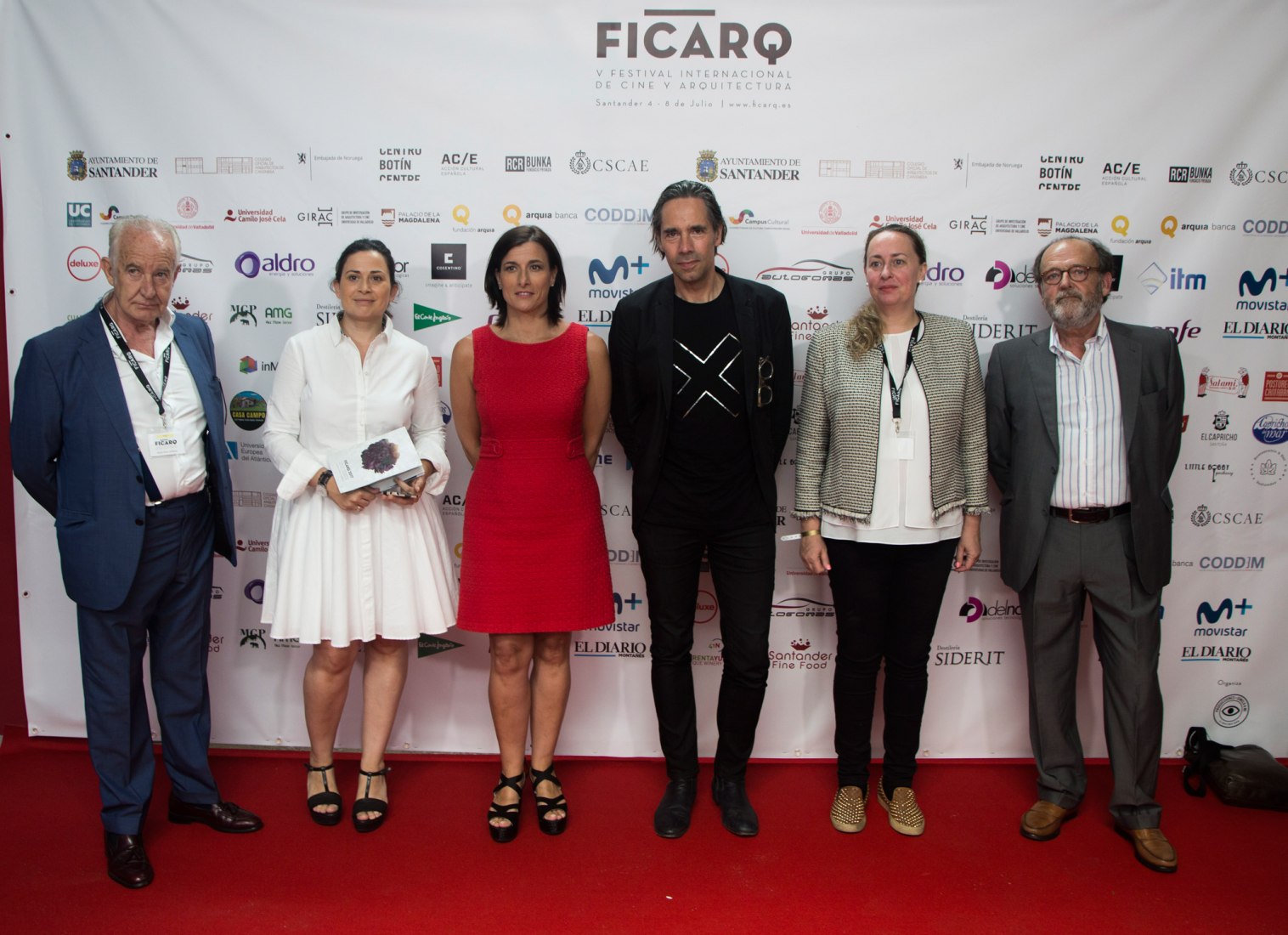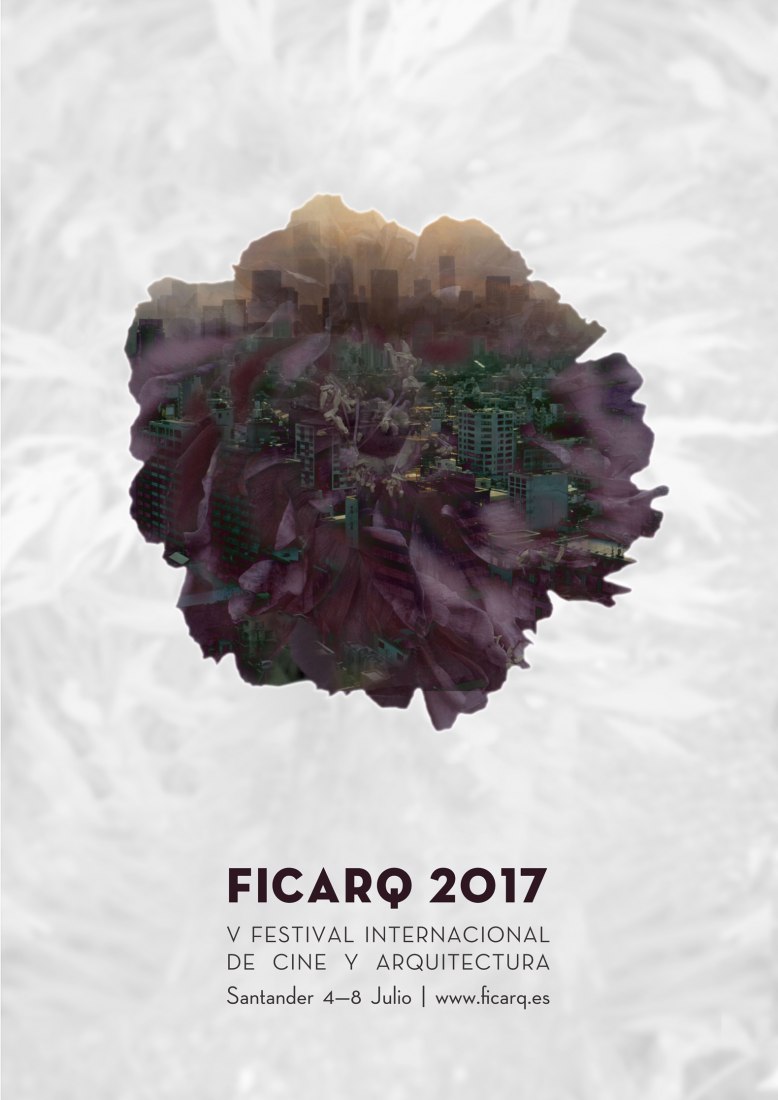Santander hosts the fifth edition of the Film and Architecture Festival (FICARQ). The inauguration was the presentation of Jacob van Rijs member of the well-known architectural studio MVRDV and director of the Rotterdam Film and Architecture Festival, AFFR.
When we discuss about the relationship between cinema and architecture, there is always a stereotyped vision where architecture is simply an instrument in the props of the process of filming a film. Examples of films such as Metropolis (1927) that owes German expressionism and Orwellian reflection of the future, Blade Runner (1982) in a postmodern and dystopic context or the typical Roman movie, Ben-Hur (1959), could incite this vision. To me, however, I like to think that there are other alternatives, and if you have to resort to classics, I have always been attracted to some mythical referents such as the mass movement that takes place in The Battleship Potemkin (1925) thanks to a simple ladder, or the understanding of the contemporary city through The Naked City (1948) that leaves the artificial stages of Hollywood and uses for the first time the real city like scene, Koyaanisqatsi (1982) with its tremendous transcription of the reality and its impactante music, or, why not, the most recent "Koolhaas HouseLife" (2008) as an example of synthesis between classic cinema, My uncle of Jacques Tati (1958) and the documentary on architecture.
To deepen in a less stereotyped understanding of the cinema in architecture, it seems to be one of the objectives of FICARQ. A young festival that is already in its fifth edition since yesterday and until next July 8 in Santander. In this context not yet fully hybridized, there is an increase in films that have been presented to this edition, 98 (double the last year), of which a jury has selected 28: five fiction and 23 documentaries.
Yesterday the International Film and Architecture Festival (FICARQ) started and it was opened by the conference of the architect Jacob van Rijs at the Official College of Architects of Cantabria (COACAN). In addition to being one of the founders of the mvrdv architecture studio, Jacob has been the president of the Rotterdam Film and Architecture Festival (AFFR) this year. His speech managed to dazzle the audience by explaining several of his projects and others in which he is still working on, showing various videos and small films that narrated more visually the proposals.
When it finished, I had the opportunity to interview Jacob in a corner away from the crowd who enjoyed the welcome cocktail. The conversation was not extremely long but very interesting. I leave the interview below:
1. We have just attended the twinning between the Cinema and Festival Internacional de Cine y Arquitectura (FICARQ) and the Architecture Film Festival Rotterdam (AFFR). FICARQ is still young. What do you think the experience of AFFR (Architecture Film Festival Rotterdam) can provide to this other festival?
I think it is more than good to have information we can exchange, as movies. Both festivals can help each other, so I think it is good to have international connections. You can find stuff in Spain, so as in Rotterdam... and this way there is a cultural exchange.
2. Why do you think these types of festivals are important? What has inspired you to get involved and be the president of this year's Architecture Film Festival Rotterdam?
Basically, I like architecture and I also like movies, both are the things in Rotterdam which I like the most, so I thought why not? I don't have anything against them. If I could participate by joining, I could help them. It should be promoted. I am worried about backgrounds and I would like to connect people and bring them together.
3. Cinema and architecture have gone hand in hand since cinema was born. In what situation do you think this relationship is nowadays?
I think that we can still see a lot of movies with urban issues. Movies about architecture add an extra layer to architecture. We can see pictures in websites and magazines, which are very visual, but very empty as well. So movies of architecture have mostly social components, and that comes into films. That’s the reason why architecture has to see movies to get inspiration. Therefore, I would say that the social component to architecture is much more than what the architecture media does.
4. In Holland, there has always been a special relationship between cinema and architecture. Jacob van Rijs, yourself as director of AFFR, do you think there is a special relationship between Dutch architecture and Dutch cinema?
No, not much. I think that cinema shows great movies, of course, but they don’t obey to architecture in Holland. There are always exceptions of course, however, lot of documents are interesting. But Dutch cinema has not really a relationship with architecture.
5. Have you worked or would you like to work on a film project?
I think I am a better architect than a filmmaker, I would ask somebody to help me to make a movie to give them the freehand but it can be nice making a movie during the construction of a building or those kind of things. There would be maybe some stuff coming soon about the way we build in Rotterdam, following construction process.
6. When I was studying in Delft, sometimes lessons took place in cinemas. Do you think architecture universities should connect more their teachings to the cinema?
Yes, there could be more lessons recorded and it would be easier to do it. People are growing up with movies and internet or YouTube. There is a different reality, and in teaching as well. But at the end most architectures universities use their own way and this doesn't change, so I think it is still very old-school.
7. Video format is used more and more in architecture presentations. How can cinema contribute to architecture, narration, space perception, to see the space...?
People expect architects would make a little movie or fancy renders…It becomes part of architecture marketing. You can use it for your benefits. Making a good story and a good kind of a script for a movie will explain the project. It can help a lot.
8. What influence has cinema had on your career as an architect?
Our first projects, our first commission came from a television company, their office was about cinema and TV and we made a building specifically for them. They chose us even dough we didn’t have that kind of experience. They said they would also give commission to a filmmaker without experience, so we would do the same. That is good, because you have to proof yourself long time before you really do big projects. They had a very open-minded, maybe because of the film history; they helped us to do the project.




























